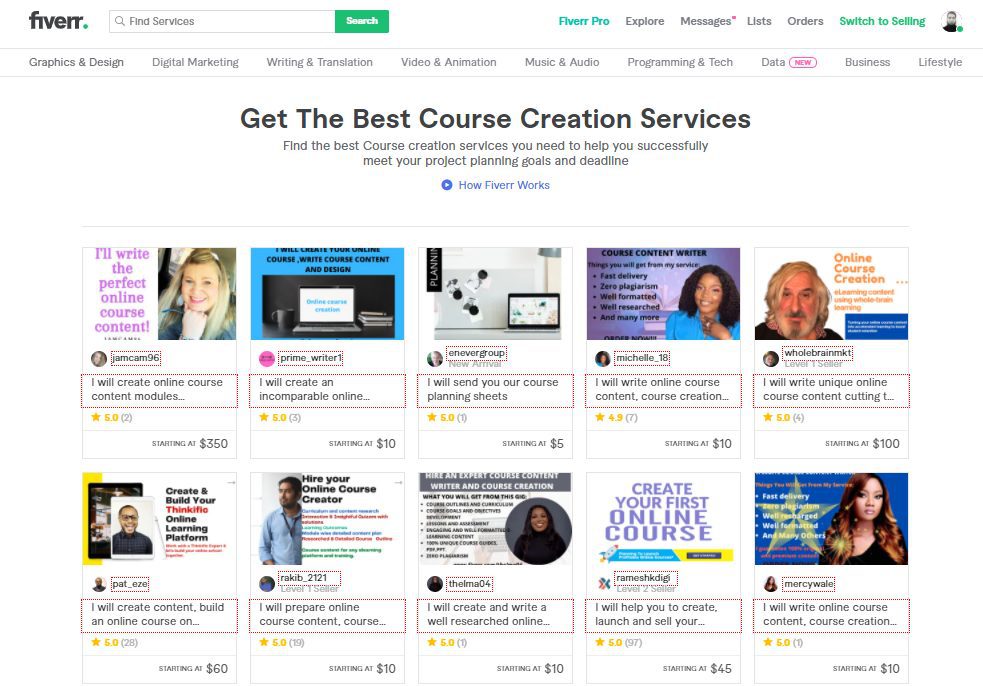

It’s no secret that the growing global demand for online courses has created a booming market for edupreneurs to tap. But even as online courses have become a part of everyday life, many course creators cling to misperceptions about what is required to build an impactful and successful online course.
Unfortunately, these misperceptions or myths hold many aspiring edupreneurs – possibly even you – back from creating online courses and achieving the success they could.
In this post, we’ll bust the seven most common myths about selling online courses so that you can create successful online courses without any doubt.
Myth 1: “A big launch is critical for success.”
Too many aspiring online course creators think that it is vital to have a big launch to be successful. In other words, if you don’t see the cash register ringing up big numbers in the first few days of offering your course, the game is over.
But it’s just not true. Despite all the hype about launches, you do not need a big launch to be successful with your online courses.
Reality: Yes, you should do the best you can with driving sales when you first release your course, but it’s rarely the case that you make all your money on a product in one single push. (That’s why, for example, you see the “gurus” continually coming back with a new round of the same product.) As I suggest in The 4 Critical Components of a Successful Product Launch Formula, a successful launch is really just one step in an ongoing process.
Keep in mind, too, that many – maybe most – successful online course creators run membership sites on a monthly, subscription-based business model. These edupreneurs often avoid big launches completely. Instead, they invest in developing a body of useful content (a lot of which is not courses) and they set up automated marketing and sales systems to pull potential customers regularly. It’s not a big launch they are aiming for, but a steady stream.
Myth 2: “You need to create a lot of courses. A single course won’t sell.”
Many creators believe that creating multiple courses is necessary for a successful online course business. With just one or two courses in their arsenal, they think they don’t have enough firepower to develop trust and credibility among potential customers.
Reality: I know many online course sellers who have generated more than $100,000 in sales by selling just one or two courses. (Check out my friend Dorie Clark’s story, for example.) In the world of e-learning, quality is more important than quantity. The three most important elements of selling a course successfully are:
- The course topic: Make sure there is an audience for the course you create. Research market demand in the area of your expertise before you decide on the course topic. (See 15 Ways to Validate Your Online Course Idea.)
- The content: Information is everywhere, and it is available for free. So, you have to offer more than information. You must create materials that act as a guide to help students cut through the noise and achieve their learning objectives quickly.
- The audience: Think relationships, not transactions. You are not out just to make a sale, you are out to develop a strong relationship with you audience over time. That means your course is not your only focus. You must consistently use tools like interactive videos, webinars, blogs, and social media to reach your audience. See 7 Ways to Elevate Your Expertise for ways to connect with audience to sell online courses.
Myth 3: “You need a large e-mail list.”
Many edupreneurs think that if they don’t have thousands of people who they e-mail about their course, there’s no way they will ever get enough sales to succeed. As a result, they hold off and hold off until a day when they think they have collected enough e-mail addresses to guarantee success.
Reality: The size of your audience matters, but it is not as important as many course creators think. What matters much more is your ability to convert your prospects into customers at a profitable price point. Quality, in other words, matters much more than quantity.
If the people who have signed up for your e-mail are really interested in what you have to offer and you build a strong relationship with them, they will be much more likely to buy from you and much more willing to pay prices that keep your business profitable.
As a simple example, imagine you have a list of only 100 people, but they are people who are a very strong match for your course and who clearly trust you. It wouldn’t be unusual to convert 20 percent of these people into students at a relatively “premium” price point. Let’s say $1000 to keep the math simple. So, 20 students at $1000 each gives you $20,000. Not bad.
Yes, you should definitely work on building your list over time. A larger list has the obvious advantage of making it possible for you to reach a larger pool of potential customers. But don’t let a small list stop you from getting started. And, work hard to keep the quality of your list high as you grow it. As a rule, it’s always better to have a smaller list of prospects who are likely to convert at a profitable price point than a larger list with weaker conversions at a lower price.
Myth 4: “Other people are already doing it, so my course won’t sell.”
There’s no denying that the market for online courses is crowded, and depending on your topic, you may find that you have a large number of competitors. As scary as that can be, it definitely should not stop you from creating a course – in fact, the opposite may be true.
Reality: Competition is a good sign. It means that there is actually demand for your topic. No competition, on the other hand, is a warning sign. It’s possible you are the first person to discover an untapped market, but the chances of that are pretty low these days.
So, accept that there will be competition and focus on positioning your course in a way that sets it apart from the competition. And, don’t ever forget that you are likely the most unique element of your course. Even if someone else is offering a course that seems exactly like yours, they don’t have your experience, perspectives, personality, or specific expertise.
Myth 5: “Your price should be discounted in the beginning.”
Most beginner – and many advanced – course creators believe that the only way to attract more prospects and increase the volume of sales of online courses is by decreasing price. As a result, they end up pricing too low and leaving money on the table that could help them to grow their business.
Reality: Pricing is all about communication and perception. When you set a low price, you send a message about the quality of your offering and you also set expectations for the future. The reverse is true of higher prices.
It’s important to remember that price is only one factor that prospects consider when deciding whether to buy. To avoid making price the main factor, successful course creators need to focus on making sure their offering truly aligns with their learners’ most pressing needs and that the learning experience delivers real results. They also need to focus on building their authority as an expert and gaining the trust of prospects – basically, building a strong brand.
For additional thoughts on pricing, see How To Price Online Courses – 10 Tips from 20 Years of Experience.
Myth 6: “You have to have the right technology to succeed.”
I’ve been in the learning technology business for years, and I continually see course creators get bogged down with deciding on the right tools and platforms to use. At the same time, I’ve seen people have great success with nothing more than a hidden YouTube channel and a simple e-commerce service.
Reality: Technology matters, but your mindset about technology matters much more. You can launch a successful learning business with any of the platforms I cover in 15+ Platforms to Create and Sell Online Courses, but you have to pick one and get started if you expect to achieve anything.
In fact, it’s not even a given that you need a specialized online course platform.
Like I said, I’ve seen people do well with just a YouTube channel and simple e-commerce. Sure, a specialized platform can help streamline marketing and delivery, but you can (and should) also leverage word of mouth, current customers, blogging, and social media channels to create a buzz about your courses and market them successfully. You can achieve a lot by creating a solid home base website and putting your time, effort, sweat, and stress into value creation rather than technology.
Myth 7: “You need to have a huge marketing budget.”
Finally, it’s a myth that you need to spend large amounts of money on ads, webinars, and other forms of marketing to sell courses. I think many course creators lean on this one either as an excuse for not moving ahead or as a reason they aren’t enjoying greater success.
Reality: Yes, it’s competitive out there, but most effective marketing still has much more to do with the quality of the content you offer and the level of trust and authority you are able to cultivate. Without these elements in place, any money you spend is likely to be wasted.
Once you do have them in place (or are in the process of getting them in place), there are plenty of free or low-cost ways to promote yourself. I’ve covered nearly all of these in various posts, but here’s a quick rundown of some of the main ones:
- Blogging and guest blogging to establish yourself as a thought leader on your topic of interest
- SEO to drive traffic to your website and sales pages
- Posting about your courses and related content in social media channels
- Learning the basics of Facebook and Google Ads and using them to drive highly targeted traffic (more on both of these soon)
- Identifying and building relationship with influencers in your market (i.e., other experts who have a following)
- Appearing as a guest on podcasts and Webinars
You get the idea. There is plenty that can be done with little or no money. As with technology, though, you have to commit to taking action. You can outsource aspects of your marketing, but no 3rd-party can make marketing magically happen for you.
Bust the Myths, Seize the Opportunity
The reason for creating a post like this is that it surfaces they myths and barriers that hold many of us back – often unconsciously – and gives us the chance to face up to them. So, before you move on, take a moment to answer honestly:
Are any of these myths currently holding me back?
If the answer is yes, consider yourself lucky: you have just discovered a clear area to work on that, once addressed, will result in improving your learning business.
The key, of course, is to make a plan and take action.


